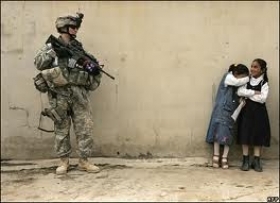Some in Washington are calling for a counterinsurgency strategy against Mexico’s drug gangs — this not only misrepresents the security situation in that country, but its proponents have provided no good arguments for the move.
The most prominent recent advocate of counterinsurgency, or COIN, is U.S. Rep. Connie Mack, who used a Congressional hearing earlier this month to call for a revamped Merida Initiative that would be based on COIN, and presumably include a far larger role for the American military. Some analysts outside the government have made similar pronouncements, while Secretary of State Hillary Clinton famously referred to an “insurgency,” comparing Mexico to Colombia at the height of its conflict with guerrilla groups.
But these voices are mistaken. One clue that COIN is not the appropriate philosophy for Mexico is that the nation is not suffering from an insurgency. Insurgencies are political movements that seek to extract concessions from the government, or the government’s downfall, through violence. The Mexican gangs are motivated by profit, and have no visible ideological agenda. Their only political goal is weaker law enforcement.
A counter to this assertion could be offered by gangs like the Familia Michoacana and its offshoot, the Caballeros Templarios, as well as some traffickers’ use of pseudo-religious icons like Jesus Malverde (a Robin Hood-like figure) and Santa Muerte (Holy Death). In an era where the best known insurgencies have been led by Islamic extremists, it does not require a great deal imagination to conceive of a religiously motivated drug gang morphing into an insurgency.
But imagination notwithstanding, there’s simply zero evidence of such a scenario. Mexican groups’ religious patina is just that, not a guiding philosophy. While gang members use religious icons as a sort of good-luck charm, nothing that has happened over the past five years suggests that Santa Muerte or any other religious figure has an appreciable role in any gang’s operations.
It’s also worth noting that hearts and minds, famously the battleground of insurgencies, are not in play in Mexico. While President Felipe Calderon’s popularity has declined in recent years, the citizens he represents overwhelmingly favor the government in its aggressive combat of organized crime. The proportion of Mexicans who support the use of the army against organized crime is somewhere between between 74 and 83 percent, depending on which poll you use — this serves as a good proxy for support for the government, given the prominence of the issue. Eighty-eight percent of the respondents to a September 2010 poll by the firm BGC expressed support for aggressive combat of the nation’s drug traffickers.
Furthermore, because a public, U.S.-backed COIN drive could provoke a great deal of opposition in Mexico, such an approach could have the perverse effect of undermining support for a strong anti-organized crime policy within the country.
Those calling for a COIN strategy often elide these differences between a traditional insurgency and Mexico’s problems by employing the label “narcoinsurgency.” However, the fundamental elements of an insurgency, including those that make COIN an appropriate response, have little to do with whether narcos are behind the mayhem. In other words, the “narco” modifier merely confuses the issue, and it doesn’t make COIN any more fitting for Mexico.
Nor is the simple increase in violence or brutality enough to make COIN appropriate. Insurgency represents a difference in kind from regular crime, not a more violent version of the same thing. Furthermore, there are many nations in the region that are both more violent than Mexico (Venezuela, Brazil, Honduras, among various others) and suffer from a greater degree of governmental weakness (Guatemala, for one), yet COIN is hardly ever invoked as the solution for those nations.
The COIN crowd also does not pay sufficient attention to the practical difficulties in committing the U.S. to a COIN approach in Mexico. One obvious challenge is political: while the level of cooperation between the two militaries has improved in recent years, there is a significant degree suspicion of U.S. military designs in Mexico. Given the fact that U.S. military action resulted in Mexico losing half of its territory in the 19th century, it’s not a surprise there is widespread opposition to U.S. troop deployment, and there’s little doubt that greater involvement, even without boots on the ground, could cause political upset.
Furthermore, it’s not entirely clear what the U.S. military can do to help Mexico overcome its most formidable institutional obstacles. It won’t help lower indices of corruption, nor will it unclog the nation’s judicial system, nor plug the leaks in the penal system.
The basic question that COIN advocates must answer is: Why? Given the above differences between Mexico’s security problems and the basic elements of insurgency, why would COIN be better than a constantly refined law-enforcement approach? What is makes Mexico different from, say, Italy in the 1980s, or any other country that has engineered a vast improvement in security without using COIN? These questions have not been adequately addressed, yet the burden of proof is on the COIN crowd. If they can’t provide an answer, then the major argument for COIN is simply that it hasn’t been attempted before, which is exceedingly unpersuasive.

